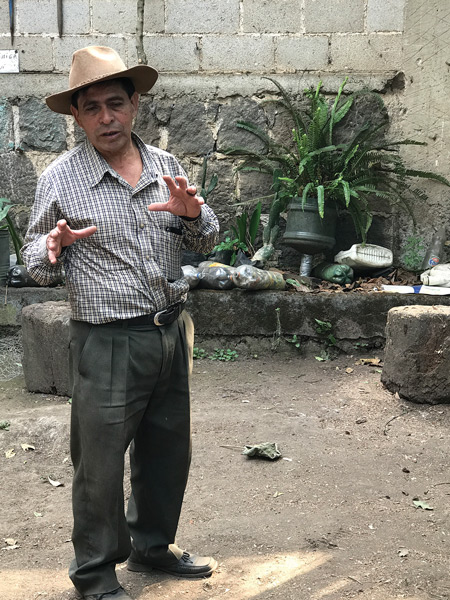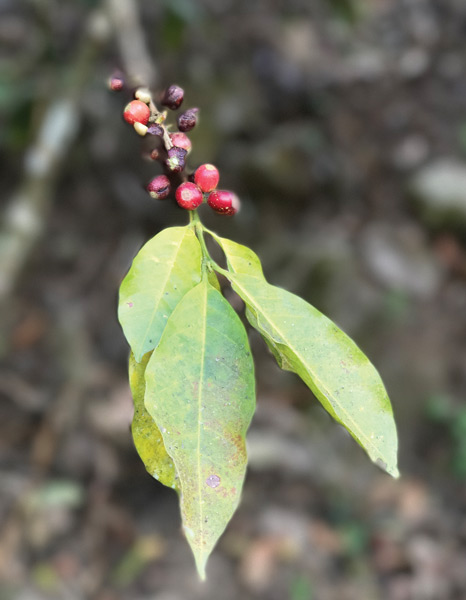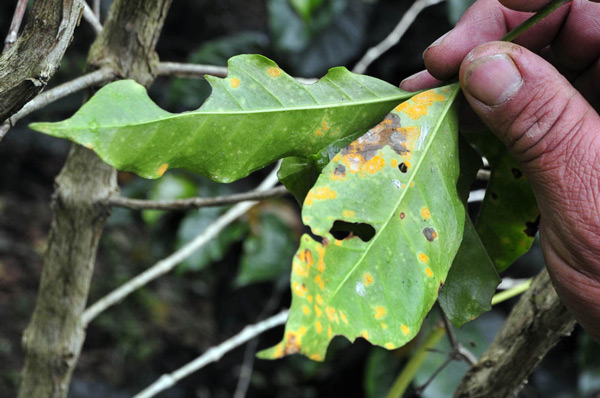COFFEE IN CRISIS
How climate change impacts livelihoods in Guatemala.
Guatemala is one of the most ecologically diverse nations on the planet, containing a vast abundance of natural resources. Many are unaware, though, how the areas in this region are being affected by threats from environmental degradation and climate change.
Rural food producers who depend on natural resources face challenges. Meanwhile, Guatemala is a developing country that is extremely vulnerable to the impacts of poverty and climate change.
Changing weather patterns have contributed to reduced coffee harvests in Guatemala by speeding the spread of a fungus called coffee leaf rust, which makes the coffee unusable and eliminates livelihoods. The disease spread across Central America in 2012, devastating coffee plants, due in part to warmer temperatures in the growing regions, according to many experts.
“The climate change is impacting the people who rely on their coffee and their plants for whatever is being grown,” said Toribio Chajil, coordinator of the Reforestation Project in San Lucas Tolimán, overlooking Lake Atitlán.
“The farmers are being impacted because they cannot grow as much, which is obviously impacting their economical stance.”
Through his reforestation project, Chajil provides seedlings, insight and encouragement to people around Guatemala to help control erosion and promote environmental sensitivity.
“The climate right now is kind of crazy,” Chajil said. “If we were talking about the climate maybe 20 years ago until now, it has been pretty normal. But the climate is changing a lot and there isn’t much rain anymore, which is affecting the trees and the plant life because it is so dry.”

Toribio Chajil of San Lucas Tolimán spends a good portion of his time educating school children how to care for the land.
Despite the success and progress Toribio has made, many coffee farmers and the people living in Guatemala do not fully understand the significance climate change has on growing crops.
“The people come to me and ask me what is going on,” Chajil said. “Climate change is very impactful. When people come to me and I answer them, they don’t realize the true impact that climate change has from growing their crops on one side of their land, so they’ll probably try and buy or find more land so that they can find more ways to grow. So, they are not really understanding the big significance of climate change, they are kind of just dismissing it.”
However, a new study by the University of Exeter suggests simple economics also played a role in the spread of coffee leaf rust. Dr. Dan Bebber, the study’s lead author, said the crisis has been driven by the “perfect storm” of weather coupled with less fertilizer use because of price increases during the 2008 financial crisis.
“Farmers weren’t treating coffee bushes as they normally would, and this was probably one of the factors that led to the rise in coffee leaf rust,” said Dr. Bebber. “The climate at the time was conducive to coffee leaf rust, but there had been earlier periods of similar conditions when there wasn’t an outbreak.”
To address the problem of coffee leaf rust, non-governmental organizations like Catholic Relief Services (CRS) have carried out efforts through the Green Coffee project throughout Guatemala.
CRS technicians work with farmers by helping them learn comprehensive soil management techniques to protect their crops. Additionally, farmers have branched out by planting new crops such as organic coffee plants and macadamia nuts.
“One practice that people use and are starting to realize is that organic harvests or the organic growth of plants,” Chajil said. “When people practice this, it might be a longer process because they can’t use the chemicals to keep off something. But even though it is a longer process, in the end it is a better product that they can sell.”
Without the proper funding and global cooperation from the United States though, the progress that has been made in improving environmental conditions in Guatemala will be put to a halt. In the Trump administration’s 2018 budget request, there is a 32 percent decrease in the spending that goes to the State Department and U.S. Agency for International Development.
In a newsletter, Sean Callahan, CRS president, expressed his opposition to the foreign aid cuts. “If we don’t invest in education, water and sanitation, and sustainable agriculture, then humanitarian crises will only increase,” Callahan said.
The cuts will increase the crisis in underdeveloped countries like Guatemala where people are trapped in a cycle of poverty. With the United States withdrawing from the Paris climate change agreement, temperatures will continue to worsen throughout the globe. Some leaders remain hopeful that U.S. President Donald Trump may be persuaded into staying in the accord.
“The people here in Guatemala are just so poor,” Chajil said. “There are very, very few people that have a lot of money. So, there is not much that people can do at the moment just because they don’t have the resources to pull something together. We need someone from a political party who really believes in taking care of the Earth, taking care of all the pollution that is going on in Guatemala. When they get someone like that they can start to create a better country.”
REVUE article by Jaclyn Labes
More information about Toribio Chahil CLICK HERE

